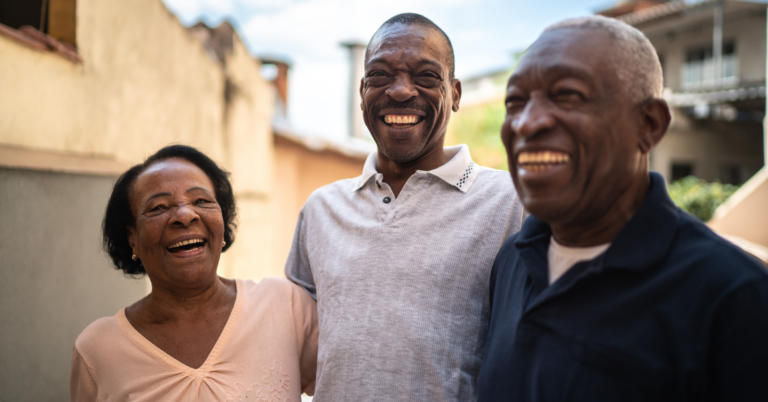
Rural Health Transformation: Lessons from the ToRCH Model
How Missouri’s ToRCH model demonstrates that technology and trust can drive sustainable change in rural communities.
Rural communities across the United States face some of the most persistent health challenges—limited access to care, provider shortages, and higher rates of chronic disease. Yet they also hold immense potential for innovation, resilience, and collaboration.
That was the focus of the recent “Rural Health: A Guide for Digital Health Transformation” webinar, hosted by Unite Us alongside partners from Missouri’s Department of Social Services. With the historic $50 billion Rural Health Transformation Fund (RHTF) on the horizon, the session highlighted what states can do today to position themselves for success—and why technology, trust, and community partnerships will be key drivers of transformation.
Setting the Stage:
The Rural Health Transformation Fund
The RHTF, created as part of H.R. 1, represents a once-in-a-generation opportunity to reimagine rural health systems. Through 2030, states will have access to $50 billion in federal funding—not just to stabilize hospitals, but to build connected, responsive, and sustainable rural health ecosystems.
As Natalie Daniel, Director of Policy at Unite Us, explained in her opening remarks:

“This fund will be used to kickstart lasting and transformative change in rural communities. There’s no time to waste—applications will be due before the end of the year, and early planning is essential.”
With the application released this week, the countdown has officially begun. The fund emphasizes investments in prevention, workforce development, infrastructure modernization, and digital health solutions. States must apply for at least three approved uses, creating both flexibility and responsibility to craft holistic proposals.
Spotlight on Missouri: The ToRCH Model
A centerpiece of the discussion was Missouri’s Transformation of Rural Community Health (ToRCH) model—a pioneering initiative that could serve as a blueprint for other states.
Justin Clutter, PMP, Transformation Office Project Manager at Missouri’s Department of Social Services, described the program as an effort to “think about rural health care differently.” Instead of relying solely on sick care and hospital utilization, ToRCH emphasizes:
- Upstream interventions addressing drivers of health
- Strong local leadership boards combining hospitals, primary care, and community-based organizations
- Shared savings incentives that reinvest Medicaid cost reductions back into rural hospitals
One striking example: in a ToRCH pilot community, ten social service agencies co-located in a single building to create a one-stop shop for residents. From showers and laundry access to job placement support, this collaborative hub demonstrates how healthcare can expand beyond traditional walls.
The results speak for themselves:
400+
community-based ToRCH programs launched
100%
case acceptance rate for contracted programs
2,050+
clients served as of August 2025
Technology as a Catalyst for Rural Health Transformation
Technology isn’t just an add-on to ToRCH—it’s a backbone.
Kelsey Hague, Account Executive at Unite Us, emphasized the importance of trust and flexibility in implementation:

“Building trust within rural communities has been key. At the end of the day, they know their unique workflows and needs. Our role is to meet them where they are and support their vision.”
Unite Us delivers the infrastructure that makes this vision a reality. Through our secure, closed-loop referral platform and streamlined revenue cycle management, hospitals and community organizations are empowered to coordinate services, track referrals, and secure reimbursement for eligible non-medical interventions. With seamless integrations into leading EHRs such as Epic and Meditech, Unite Us ensures technology aligns effortlessly with local workflows.
Beyond ToRCH, Unite Us’ tools have already demonstrated measurable impact across states, based on Unite Us research and external evaluations:
59%
drop in postpartum hospital readmissions
85%
per member per month in Medicaid savings
6.5x
faster service connections
89%
improvement in awareness of available services
These outcomes prove that data-driven care coordination can do more than connect services—it can deliver scalable, sustainable results.
Lessons Learned from the Field
The ToRCH model is still evolving, but early insights are promising. Justin Clutter shared that the greatest win so far has been breaking down silos:

“Getting hospitals, FQHCs, behavioral health providers, and public health agencies in the same room has opened up so many doors. There’s been a lot of collaboration and even new friendships that didn’t exist before.”
Other lessons include:
- Face-to-face engagement matters. Quarterly site visits build relationships, trust, and momentum in ways virtual meetings cannot.
- Every rural community is unique. A one-size-fits-all approach won’t work; local leadership boards are essential.
- Problem-solving creatively. From purchasing vans for transportation to building community kitchens, small investments can unlock big solutions.
Key Takeaways for States Preparing RHTF Applications
Drawing on the ToRCH experience, the webinar surfaced several actionable insights for states and policymakers:
- Start Early and Strategically
Begin planning now, mapping out your state’s priorities and aligning them with the RHTF’s approved uses. - Build Cross-Sector Partnerships
Engage hospitals, primary care providers, and community-based organizations from the start. Sustainable transformation requires collaboration across silos. - Leverage Technology and Data
Use digital tools not only to coordinate care but also to generate insights that guide strategy, track outcomes, and demonstrate impact. - Design for Sustainability
ToRCH’s shared savings model shows how upfront investments can transition into long-term, self-sustaining impact. - Keep Communities at the Center
Perhaps the most repeated theme of the webinar: solutions must be community-led to succeed.
Looking Ahead:
The Road to Rural Health Transformation
The Rural Health Transformation Fund is a once-in-a-generation opportunity. While Missouri’s ToRCH model is tailored to its own context, its core principles—trust, technology, and community-driven design—offer a roadmap for other states preparing their applications.
As Kelsey Hague put it:

“At the end of the day, it always comes back to the community. They need to approve it, they need to have buy-in, and it has to work for them.”
Unite Us is already working with states across the country to unlock federal funding and accelerate transformation. The message is clear: states that act quickly will be best positioned to take full advantage of the RHTF.
Turning Opportunity into Impact
The challenges facing rural healthcare are real—but so are the opportunities. By blending innovative care models, digital tools, and cross-sector collaboration, states can use the RHTF to build healthier, more resilient communities.
Missouri’s ToRCH initiative is proof that transformation is possible when communities lead, technology supports, and funding creates the conditions for sustainability.
👉 Want to dive deeper? Watch the full webinar replay here or connect with the Unite Us team to explore how we can support your state’s rural health transformation journey.



